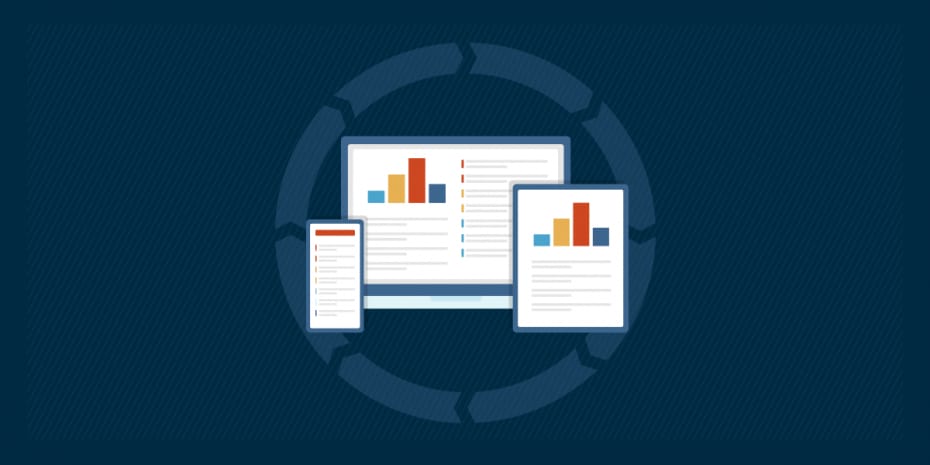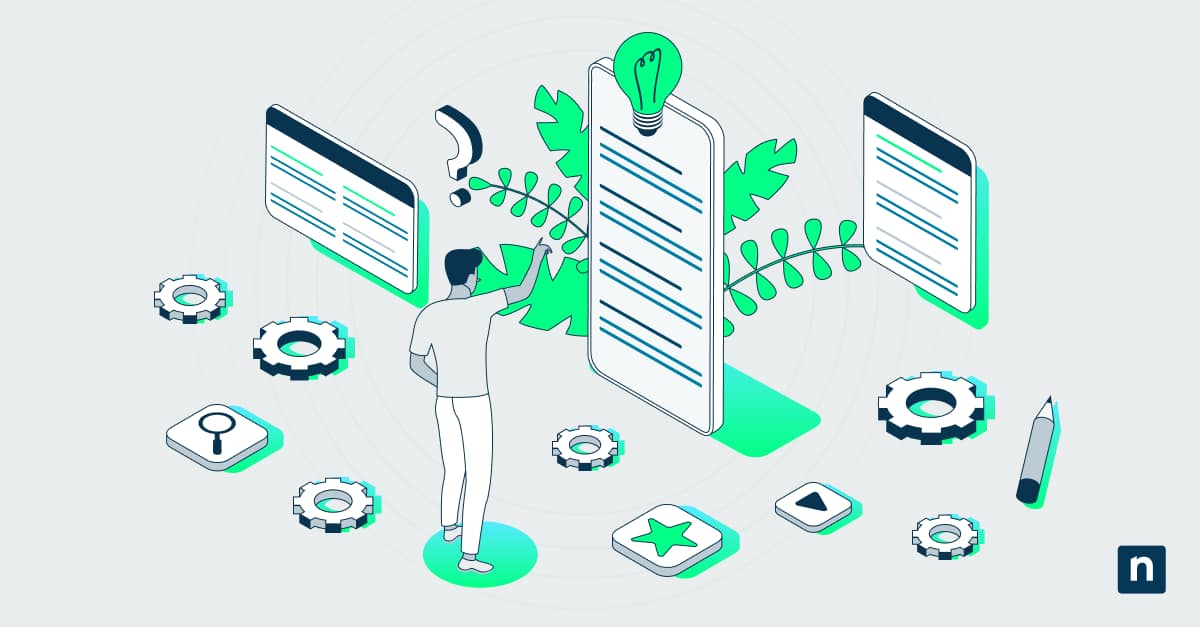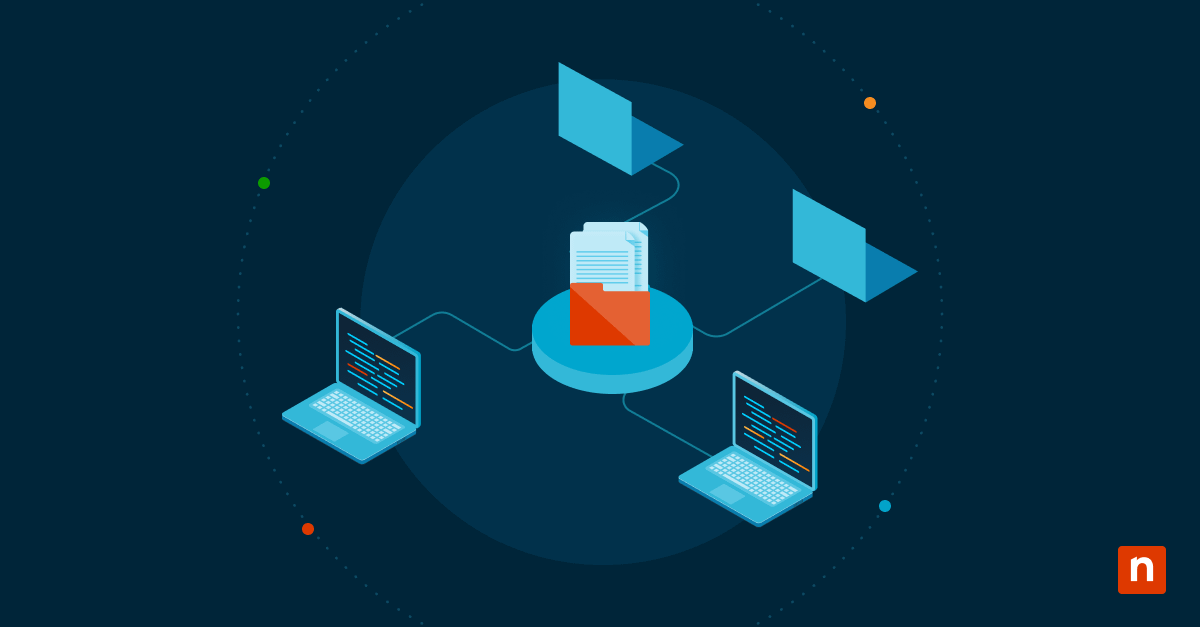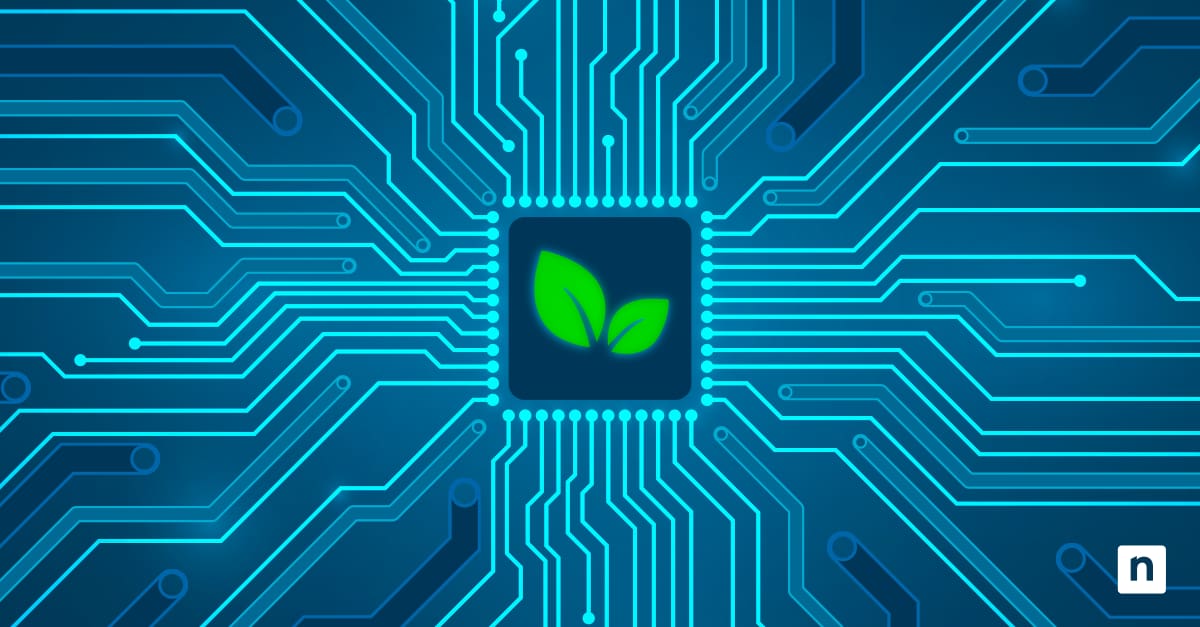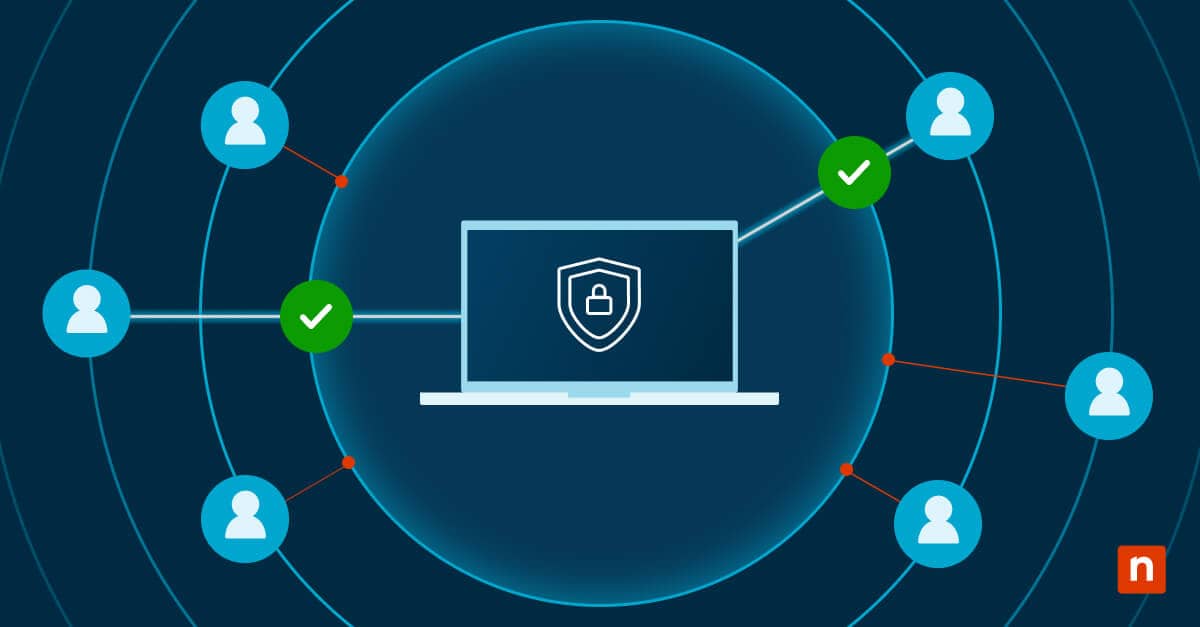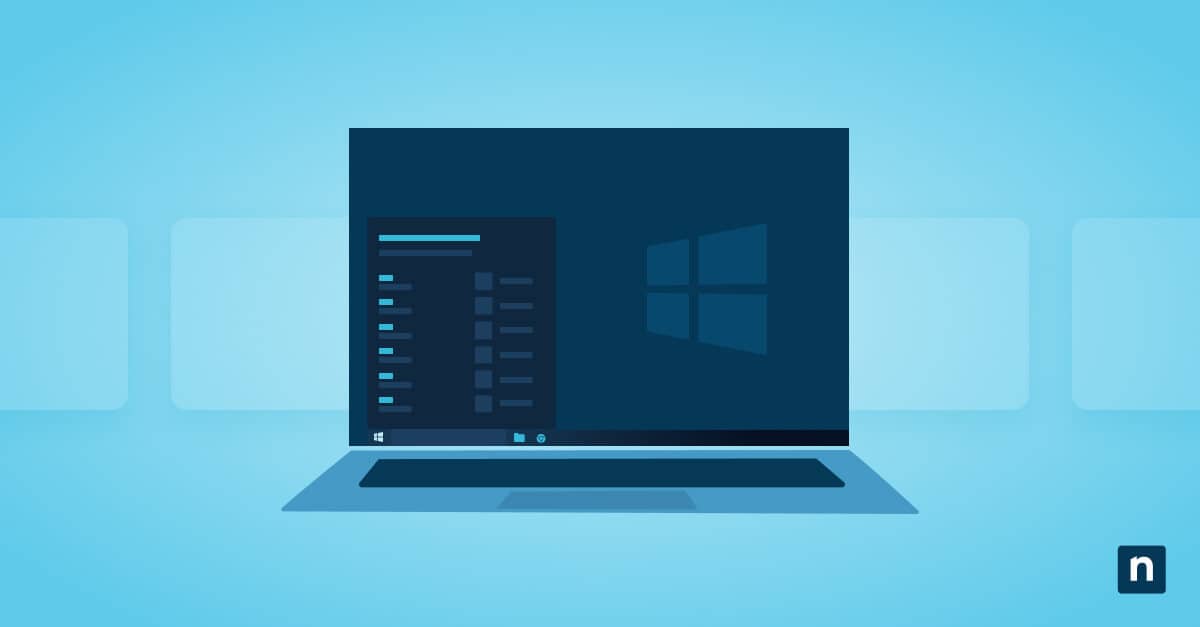Endpoint management is critical for IT teams. In a SANS survey they found that 44% of IT teams manage anywhere from 5,000 to 500,000 devices. With so many devices, it can be challenging to keep track of the health and status of each individual endpoint.
So how can IT teams ensure that organizational endpoints continually contribute to the company’s success? Endpoint lifecycle management is a valuable process that can enable your team to achieve this.
What is the endpoint lifecycle?
The endpoint lifecycle consists of various stages each computer, laptop, mobile device, or server goes through in your IT environment. It follows an endpoint from when it is first approved and obtained through when it is retired and disposed of.
The five stages of the endpoint lifecycle are:
1. Procuring
The endpoint lifecycle begins when your organization initially acquires the device. Before this, a requisition is submitted, research is conducted to determine which asset is needed, and a plan is set to deploy the endpoint.
2. Taking an inventory
Every endpoint that is added to your organization needs to be added to your IT asset inventory so you have a record of all devices and endpoints. IT asset management software is an effective tool that can be used to accomplish this.
3. Assigning and deployment
The last step required for device setup is to assign devices and deploy them to users or departments. Installing hardware and software, setting up configurations, and adding them to management software
4. Managing/Supporting
Ongoing management and support, through the help of endpoint management software, helps to maximize the lifespan of the endpoint. Increasing the lifespan of the asset allows you to reduce your total spend on the device and improves the productivity of the end user.
5. Retiring
When endpoints are either no longer needed or are not secure, they have reached their end of life. At this point, the endpoints should be retired.
What is endpoint lifecycle management?
Endpoint lifecycle management includes the policies and procedures your organization has in place to manage the lifecycle of all your organization’s devices. This includes tasks to track, maintain, update, protect, and deploy each endpoint in the IT environment.
Examples of various activities that are typically included within endpoint lifecycle management are:
- Inventory organizational endpoints
- Software installation and configuration
- Patch application and updates
- Renew or dispose of devices
What is device lifecycle management?
Device lifecycle management (DLM) is the extensive practice of managing devices throughout their lifespan. It starts with their acquisition and ends with their disposal, ensuring their full utilization while maintaining security and optimizing costs throughout their lifecycle.
Device lifecycle management (DLM) vs endpoint lifecycle management (ELM)
Device lifecycle management and endpoint lifecycle management are closely related concepts that pertain to a management approach of IT resources. Here are their key differences:
-
Scope
Device lifecycle management. Covers the lifespan of physical devices including, but not limited to endpoints. These are devices such as mobile phones, laptops, printers, and IoT devices.
Endpoint lifecycle management. Encompasses a broader scope including tasks involved in managing devices’ lifecycle within an IT environment. It tackles the management of software and the user experience on various devices.
-
Focus
Device lifecycle management: The main focus of this undertaking is more on the logistical aspect of managing the physical devices themselves. This includes acquisition, device provisioning and configuration, maintenance and warranty management, and secure disposal or recycling of procured devices.
Endpoint lifecycle management: Tackles a broader focus that includes DLM activities but also extends to software deployment, patching, security configuration, power management, and user access control. ELM tasks are executed to ensure endpoint security and compliance. It also guarantees optimal functionality of devices throughout their lifespan within the IT network.
Stages of device lifecycle management
Managing devices through their lifecycle goes through different stages:
- Acquisition: This encompasses the selection of devices to acquire, price negotiations, the purchasing process, and the delivery of the devices.
- Deployment: This process refers to setting up and initializing the devices, authorizing and installing software, configuring security settings, and distributing the devices.
- Management and maintenance: Management and maintenance pertain to monitoring device performance, troubleshooting issues, deploying patches, enforcing security updates, and providing user support.
- Retirement and disposal: When a device reaches its end of life or becomes obsolete, it’s time for retirement and disposal. This process includes wiping data, device decommissioning, recycling, or disposal according to community regulations.
Benefits of device lifecycle management
Device lifecycle management offers advantages for both users and the issuing organizations:
- Enhanced security: A device under lifecycle management is given enhanced security when configured and patched consistently until retirement. This gives organizations peace of mind that the devices they issue to users are at minimal risk of being compromised.
- Optimized costs: Streamlined device management through its lifespan is a cost-effective practice. Device lifecycle management, when done effectively, can save organizations expenditures on unnecessary device purchases. It also helps extend the device lifespan and ease device maintenance.
- Improved productivity: DLM reduces workflow disruption due to proactive resolution of potential device issues.
Compliance: Devices monitored for lifecycle management comply with data privacy regulations, ensuring organizations manage devices that meet industry standards.
Why endpoint lifecycle management is important
Endpoint lifecycle management is a necessary component of a successful IT environment. It gives you visibility into the status of your organizational devices and helps you effectively manage all of your endpoints.
Remote or hybrid workforce
Zippia reports that 16% of companies are completely remote, and many employees work from home at least part-time. When your users’ endpoints are located in different areas, it can make it challenging to effectively manage and maintain their health and smooth operation. However, with endpoint lifecycle management, you can ensure that all your endpoint devices are in optimal health and contribute to a solid workforce.
Mobile device management
Mobile devices are increasingly being used in the workplace, and it’s just as important to maintain the health and smooth operation of these devices through mobile device management. Because these endpoints are being used to access company information and data, mobile devices also need to be protected and secured throughout their lifecycle.
Cybersecurity
Endpoint lifecycle management also works to protect your endpoints from exploitation and threat actors. If devices in your IT environment are unpatched, behind on updates, have incorrect software configuration, or are in bad health overall, it could result in dire security consequences. Managing endpoints through all the states of their lifecycle and performing other processes, like software configuration management, is a way to actively protect against cyberattacks and save your company both time and resources.
The benefits of endpoint lifecycle management
1. Cost savings
Managing your endpoints throughout the lifecycle allows you to maximize the use of a device and dispose of it when needed. This helps you to cut unnecessary spending on devices.
2. Increased productivity
Maintaining devices and ensuring they perform optimally prevents end users from having to attempt to resolve issues on their own, wait for help from the IT team, or potentially having an endpoint fail. Their productivity increases because they have a dependable tool to accomplish their responsibilities.
3. Improved compliance
Endpoint lifecycle management helps organizations measure up to standards in their industry and abide by any applicable compliance requirements.
4. Enhanced security
Continual monitoring and maintenance of endpoints helps you to ensure that endpoints are up-to-date and secure. This allows you to increase security on your endpoints and protect them from cyberattacks.
5. Better end-user experience
Endpoints are the tools that your end users use to accomplish their work. Managing endpoints throughout their entire lifecycle helps you provide dependable devices, resulting in greater end-user efficiency and satisfaction.
What are some challenges of endpoint lifecycle management?
1. Device diversity
Managing devices through their lifecycle may pose a challenge because of device diversity. It’ll be difficult for organizations to manage and monitor computers, laptops, smartphones, tablets, and IoT devices when running different operating systems requiring unique configurations.
Solution: One effective way to tackle this undertaking is to employ a complete endpoint management solution that can handle a variety of devices running on different operating systems. A unified endpoint management platform that can do this should also be able to manage and monitor devices through a singular centralized console. It should also allow the utilization of automation tools for configuration and deployment tasks.
Stop reacting—start leading. Learn how to shift to a proactive IT management strategy with our step-by-step guide. Get started.
2. Security threats
Bad actors are only becoming more sophisticated when it comes to executing cyber attacks. This calls for constant vigilance not only for unpatched devices with weak configurations but also for users who are potential targets because of their vulnerability to social engineering tactics.
Solution: Implement up-to-date user training, specifically on topics such as strong password policies, phishing attack awareness, device protection, etc. Moreover, deploy endpoint detection and response (EDR) solutions for real-time threat monitoring and prioritize timely vulnerability patching.
3. Lack of resources and expertise
Some organizations may have an inadequate number of people in their IT teams who can handle endpoint lifecycle management. This is not to mention the struggle of an IT team with limited knowledge of the whole process.
Solution: Outsourcing endpoint lifecycle management tasks to managed service providers (MSPs) is an excellent resolution to this challenge. Some MSPs are fully equipped with skills and endpoint management tools to handle every aspect of ELM. This not only streamlines ELM processes for your managed devices but also frees your IT team some time they can use for tasks or issues they are more capable of addressing.
4. Cost management
Balancing the need for robust security while keeping costs in check can be tricky. Optimizing license usage, automating tasks, and extending device life cycles are crucial for cost-effectiveness.
Solution: Standardize on-device models to streamline licensing costs—leverage automation for repetitive tasks to free up IT staff for strategic initiatives. Explore cost-effective endpoint security solutions. Consider extending device lifecycles through proper maintenance and upgrades.
5. Remote workforce management
Remote work setup doesn’t come without complexities. Ensuring security for devices used by employees working remotely may become challenging at some point in endpoint lifecycle management.
Solution: To mitigate this problem, the best approach is to leverage cloud management tools that provide remote access and visibility into device health and overall status. For example, comprehensive mobile device management (MDM) can contribute to streamlining secure mobile device integration. An MDM tool enables centralized policy enforcement for a geographically dispersed workforce.
6. Data sprawl
The longer a device is utilized within its lifespan, the larger the data volume it stores. This growing volume of data kept and accessed by users on endpoints poses challenges in security, compliance, and more.
Solution: One way to alleviate this challenge is to implement data loss prevention solutions that help with data movement across endpoints. Another strategy is to utilize centralized storage and cloud-based applications, which allow for the reduction of data sprawl on individual devices.
7. Integration hiccups
Managing multiple tools and platforms for different aspects of ELM (e.g., deployment, patching, security) can lead to integration complexities and hinder overall efficiency.
Solution: Choose a comprehensive endpoint management platform with powerful integration with existing IT infrastructure. This helps consolidate tools and platforms where possible, enabling IT teams to optimize device endpoint lifecycle management through a centralized approach.
Utilize endpoint lifecycle management to optimize your IT environment
Endpoint lifecycle management, when performed effectively, can help optimize your IT environment and ensure all endpoints are in prime condition. It gives you enhanced visibility so you can see what steps need to be taken throughout an endpoint’s lifecycle, all the way through to the retirement of a device.
NinjaOne automatically collects endpoint information that is readily available such as processors, memory, and serial numbers. Information that isn’t directly on the endpoint, such as asset status, asset owner, cost center, and more can be tracked using Ninja’s custom fields. Sign up for a free trial today to try out custom fields and learn how NinjaOne makes your endpoint management easier.

